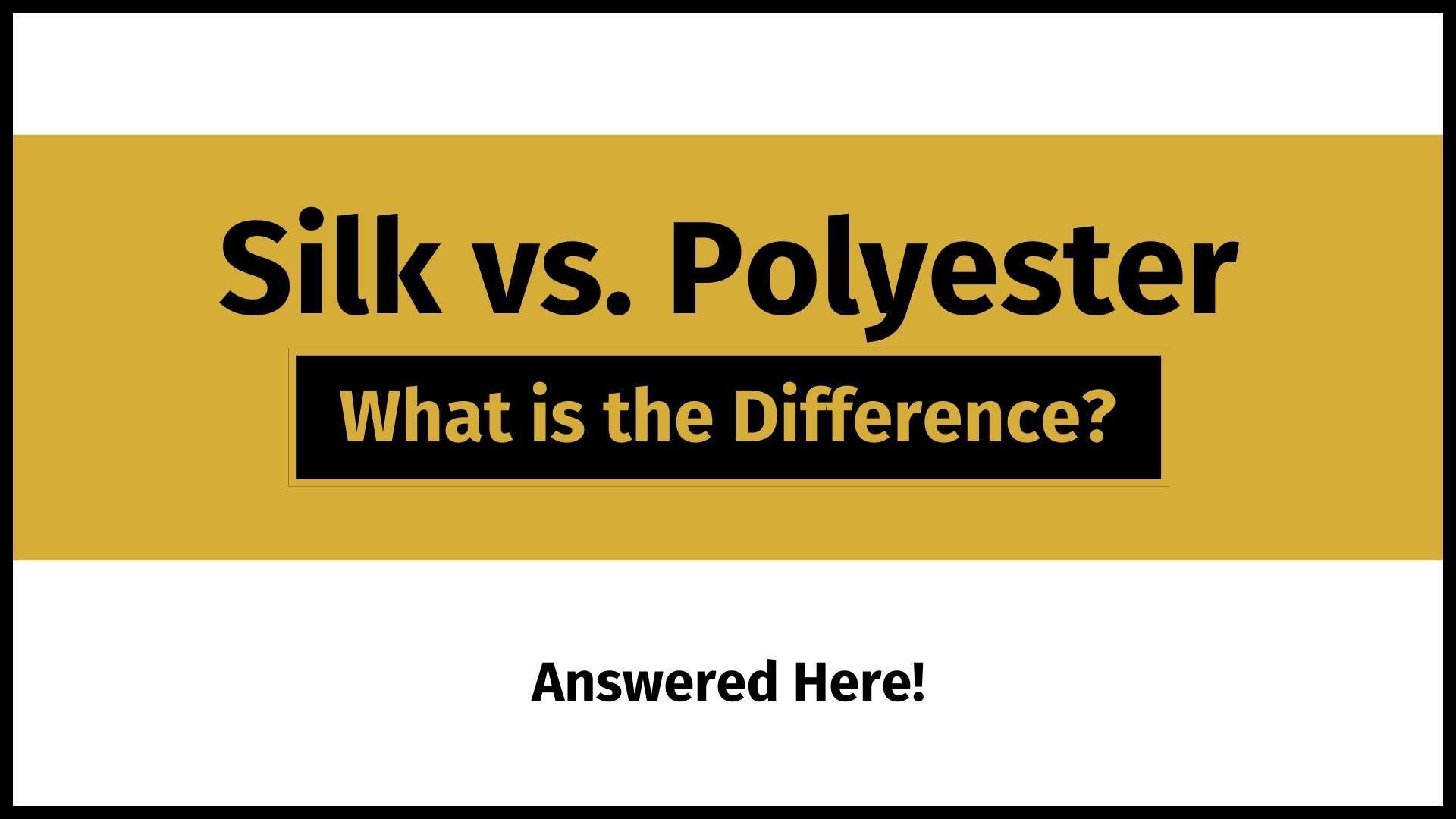The main difference between silk and polyester is that silk is a natural fiber while polyester is a synthetic man-made fiber. Cocoons produced by silkworms are boiled, spun, dyed, and weaved to eventually become silk fabric. Polyester is made by mixing terephthalic acid with ethylene glycol to make a substance called polyethylene terephthalate, also known as polyester.
This is Silk vs. Polyester: What is the Difference?

Although the two fabrics are vastly different from one another, the look and touch of polyester can often imitate that of silk. Polyester is a great imitation fabric and can be made to look and feel like silk, wool, and cotton, among other fabrics.
Continue reading to learn more about silk, polyester, and the differences between the two.
Contents:
Silk vs. Polyester
Silk and polyester have some similarities as well as many differences.
The main difference between silk and polyester is that silk is naturally produced while polyester is man-made.
Silk is made by silkworms who are fed leaves until they are fully grown and able to spin a cocoon. This cocoon is then boiled, dyed, spun, and weaved together with other silk threads to become useful silk fabric.
Polyester is a man-made synthetic fiber that is derived from petroleum. Polyester is made from the polymerization of petroleum-derived ethylene glycol and purified terephthalic acid which is then melted down to produce polyethylene terephthalate.
Polyester can disguise itself many different ways, and is presented as a low cost alternative to more expensive and luxurious fabrics such as silk and wool. Satin fabric is often assumed to be silk, because the two words have been tied together for so long. However, if you check the garment label on most satin items, you'll find that it is actually 100% polyester satin, and not 100% silk satin.
Polyester has the ability to imitate many of the qualities that silk is known for, however upon wearing the two fabrics, one can easily tell the difference. Although polyester will never be quite as soft, luxurious, and breathable as silk, it does retain some good qualities that silk does not.
Polyester is wrinkle resistant, as well as stretch/shrink resistant. Polyester is also very durable as well as extremely low cost, which is why it has become such a popular material for fast fashion retailers to use.
Polyester does its best imitation of silk when it is paired with a satin weave. Polyester satin has many of the same qualities as silk satin, but for a lower cost.
What is Silk?
Silk is a luxurious fabric that was discovered over 5,500 years ago in the Henan region of China. This discovery was made by Empress Leizu when she was drinking tea in the garden and noticed that a silkworm cocoon had fallen into her cup and started to unravel.
Silk is natural, orderless, and repels dust, mites, and mold. Silk is a hypoallergenic fabric that does not contain and harmful chemicals that will irritate or cause damage to your skin; in fact silk helps to nourish, replenish, and renew your skin.
Silk has an incredible feel, and is soft, lightweight, breathable, and drapey. Silk has a glossy outer surface that shines and glistens, which is its most easily identifiable feature.
Silk is typically priced as a premium product, and is commonly used to make blouses, shirts, dresses, scarfs, pajamas, lingerie, pillowcases, and bedding.
Related Articles:
What is Polyester?
Polyester is a synthetic textile made from the polymerization of petroleum-derived ethylene glycol and purified terephthalic acid. It is then melted down to produce polyethylene terephthalate. Simply put, polyester is another form of plastic.
Over the last 30 years polyester has grown in popularity and is used to make garments ranging from sports wear to lingerie to formal attire. Polyester plastic was initially discovered in a lab at the DuPont company sometime in the late 1930s and was then refined in the 1940's at which time it began to grow in usage and popularity.
Polyester fabric is wrinkle resistant, keeps its shape well, is versatile, durable, and inexpensive to produce. Polyester is often used by fast fashion brands, and is commonly made into t-shirts, jackets, sweatpants, sportswear, sweaters, as well as accessories such as backpacks and tote bags.
Silk vs. Satin
Silk and satin are sometimes the same thing, but sometimes they are not. This is because satin is simply a weave, and can be used in conjunction with a variety of different fibers including silk, polyester, wool, and cotton.
Satin purists contend that in order for a fabric to be considered satin, it must be made from silk fibers, and although silk satin is the finest form of satin, polyester satin is also highly popular and commonly used in fashion.
Find more detailed information by reading our complete guide on Silk vs. Satin.
Related articles:
Silk vs. Polyester FAQ
Is polyester a good substitute for silk?
Polyester is a great at imitating other fabrics and can be made to have qualities similar to silk, albeit at a much lower price. Although polyester won't look and feel quite as luxurious as silk, it can come close.
How can I tell the difference between silk and polyester?
The best way to tell the difference between polyester and silk is to touch the fabric. The soft, smooth touch of silk makes it easily distinguishable from similar fabrics made from polyester.
Is polyester more expensive than silk?
Polyester is much cheaper than silk. For example, the price of a garment made from polyester will be much lower than the cost of a garment made from silk satin.
Is polyester warmer than silk?
Polyester may be warmer than silk simply because it can be made into much different types of garments. Polyester can be used to make sweaters and sweatpants, silk cannot.
